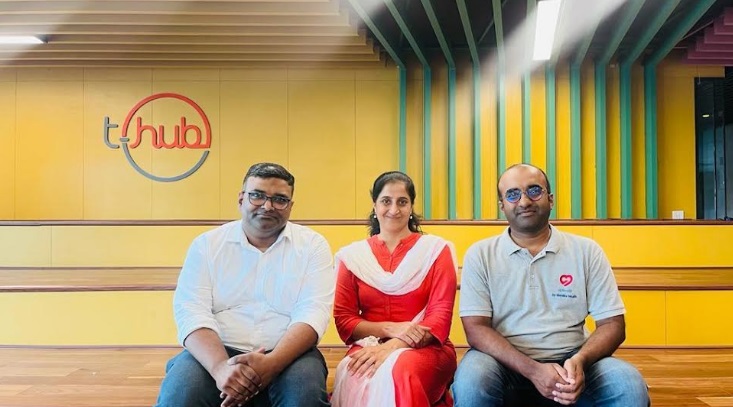Heeramandi is not immortal, but Bhansali can use his grandeur to subvert the flaws, and he does it pretty effectively.
Heeramandi in Lahore is ruled by the Tawaifs in pre-independence India. The British are at their doorstep, and Nawabs are under their grip. But the women there are incapable of falling in love since Heeramandi’s love is always fatal. However, one woman chooses to fall in love with a guy, and another is enamored with the thought of her nation gaining its freedom. Now that Doom has arrived at Heeramandi’s doorstep, the Tawaifs must once more rise.
Heeramandi: Review
Heeramandi in Lahore is ruled by the Tawaifs in pre-independence India. The artistic creations of Nawabs Sanjay Leela Bhansali transcend genre boundaries. He makes no claims about the veracity of his historical information, nor does he guarantee that you will hear the most genuine stories about the eras in which his movies are set. His stories are bits of his imagination; what’s amazing is how even a sheet of plastic looks beautiful as it floats with the wind. It’s the way he views the world, with all of its advantages and disadvantages, laced with luxury to the point where even a golden thread bows before him. In his world, women are courageous enough to stand up against the norm and defend their rights.
The foundation of all his stories is his skill at seeing the warrior in every woman and giving way to her passion. He searches the murkiest recesses of his novels for the most exquisitely blossoming flower and then reveals to you the magnificence of that setting. In Gangubai Kathiawadi, there once existed a half-cut plastic Fevicol container that was used as a flower planter, but it nevertheless seemed more valuable than works of art.
Now, with an army of spectacular actors, a story like Heeramandi, where women are viewed as nuisances, but for themselves are the Queens of Lahore, Bhansali has a playground of his dreams, a canvas he ever craved for, and a scale no one can imagine. Heeramandi, which is Moin Beg’s concept, written and directed by Sanjay Leela Bhansali with Vibhu Puri, Mitakshara Kumar, and a team of directors and writers, sets out to tell the stories of the courtesans who once ruled Lahore in pre-independence India. It is a place where tragedies are normal days and normal days are a luxury. It opens with a woman selling a newborn boy to a Nawab because if he stays in Heeramandi, he will either have to become a pimp or a eunuch. Bhansali begins his magic from this first frame.
He tells you this is not just his grandeur but now he is also open to incorporating violence in the narrative. The Bhansali of yore, who would dial down the notches when a violent turn came, is now okay with storylines that enter that territory. He embodies this in Malikajaan, a woman so complex that while being a dreaded madame to a kotha, she is also a woman who tells another woman that she respects her love for a spoiled Nawab. She is a woman who has seen the rise, the shine, the flicker, and the doom of Heeramandi firsthand. She now reigns over it and makes the dark side of it her face. She is okay selling a woman to compensate for a lost pearl but is also humane enough to keep them all safe. Manisha Koirala is a stunner. A performance everyone will remember for a long while. Each note is done to absolute perfection and panache. How did no one see this before in her?
Home»Review»Heeramandi Review – Sanjay Leela Bhansali is now a genre and his poetic grandeur stands unparalleled
Heeramandi Review – Sanjay Leela Bhansali is now a genre and his poetic grandeur stands unparalleled
Heeramandi is not bulletproof, but Bhansali has the power to sabotage the shortcomings with his grandeur, and he does that quite well.
In pre-independence India, the Tawaifs ruled Heeramandi in Lahore. Nawabs are under their thumbs, and the British are on their doorsteps. However, the women there cannot love because love always brings doom for Heeramandi. But one woman decides to fall for a man, and another falls in love with the idea of her country’s independence. Doom walks to Heeramandi’s doorsteps, and now the Tawaifs must rise again.
Heeramandi: Review
Sanjay Leela Bhansali’s art transcends the confines of genres. He is not claiming the accuracy of his historical facts, nor does he promise to give you the most authentic tales of the times his films are set in. His stories are fragments of his imagination, and how even a sheet of plastic manages to float with the wind aesthetically, looking beautiful, is what is fascinating. It is how he looks at this world with its pros and cons but also a lacing of opulence where even a golden thread obeys him. The women in his world dare to go against the grain and fight for their rights. His mastery at finding a warrior in every woman and surrendering to feminine energy is the root of all his stories. He delves into the muckiest corners of his stories to find the most beautifully blooming flower and shows you the grandness of that surroundings. Remember when a half-cut plastic Fevicol container was a flower pot in Gangubai Kathiawadi but it still looked more expensive than art pieces?

Now, with an army of spectacular actors, a story like Heeramandi, where women are viewed as nuisances, but for themselves are the Queens of Lahore, Bhansali has a playground of his dreams, a canvas he ever craved for, and a scale no one can imagine. Heeramandi, which is Moin Beg’s concept, written and directed by Sanjay Leela Bhansali with Vibhu Puri, Mitakshara Kumar, and a team of directors and writers, sets out to tell the stories of the courtesans who once ruled Lahore in pre-independence India. It is a place where tragedies are normal days and normal days are a luxury. It opens with a woman selling a newborn boy to a Nawab because if he stays in Heeramandi, he will either have to become a pimp or a eunuch. Bhansali begins his magic from this first frame.
He tells you this is not just his grandeur but now he is also open to incorporating violence in the narrative. The Bhansali of yore, who would dial down the notches when a violent turn came, is now okay with storylines that enter that territory. He embodies this in Malikajaan, a woman so complex that while being a dreaded madame to a kotha, she is also a woman who tells another woman that she respects her love for a spoiled Nawab. She is a woman who has seen the rise, the shine, the flicker, and the doom of Heeramandi firsthand. She now reigns over it and makes the dark side of it her face. She is okay selling a woman to compensate for a lost pearl but is also humane enough to keep them all safe. Manisha Koirala is a stunner. A performance everyone will remember for a long while. Each note is done to absolute perfection and panache. How did no one see this before in her?

There are so many layers that Bhansali attempts to create and even succeeds in most of the places. Heeramandi is certainly not an easy show to make. There is detail in every corner of this world. He is trying to teach you the culture of Tawaifs, what Mehfils meant to them, who were Nawabs to them with his grandeur. The poetry of pain that lurks in Heeramandi is a very interesting leitmotif. These women love their Nawabs, but for most of these Nawabs, they are just pawns to pass the time before they find a wife. Richa Chadha gets the most heart-breaking character as she craves affection. The actor steals the show in a very limited role and this is the Richa we have been craving to see. An stellar performance that is perfect. But I wish she had more and her arc doesn’t contribute much to the story after her absence. It all feels like a filler.
First Official Teaser: Maruti Swift 2024 Bookings Open at Rs. 11k Ahead of Launch.
Heeramandi is the Bhansali magic stretched to 8 hours, unlike the 3-hour limit we have witnessed for the past three decades. And to consistently keep the poetry alive for 8 long hours is not easy. It flickers and you can see it. It does the most when it focuses on the central love story of Tajdaar and Alamzeb (Sharmin Segal). The love story strays far from the poetry and is more of tokenism to advance the narrative. It is also because of a restrained performance from Segal, that feels more like someone trying to be a Bhansali heroine rather than organically blending into the surroundings. There’s a long way to go.








